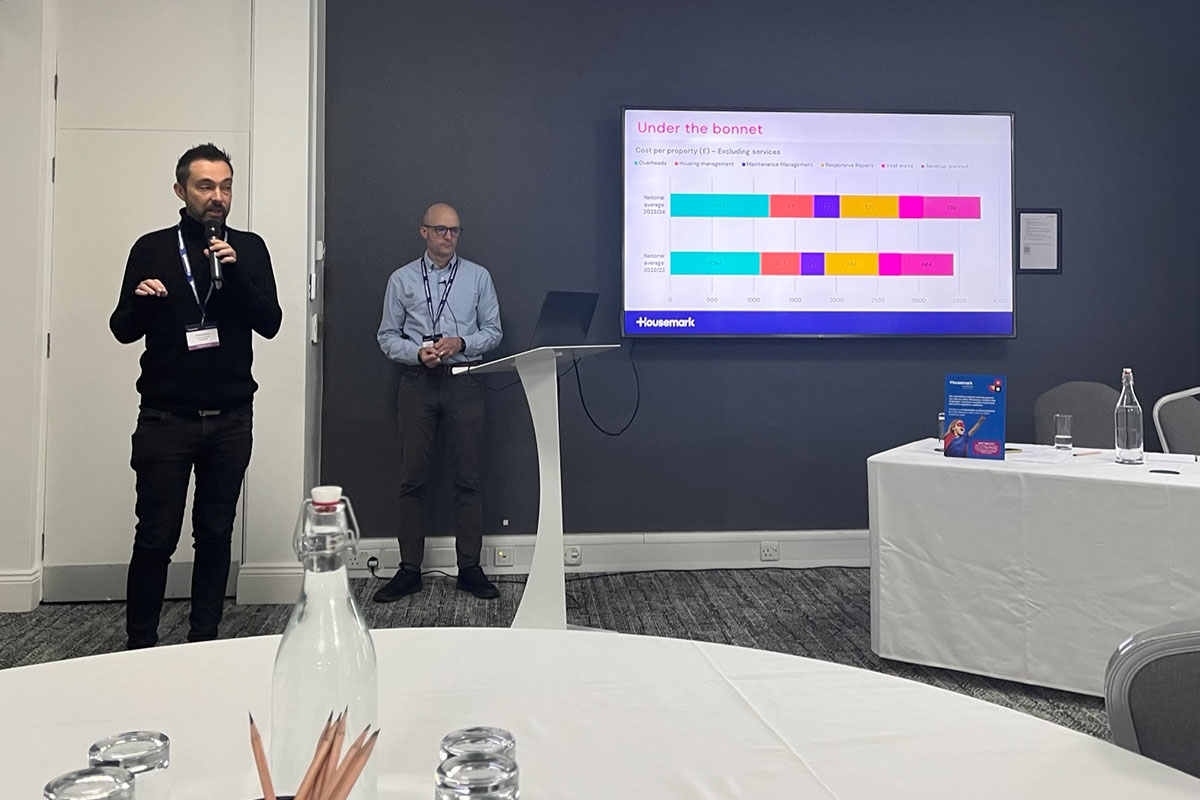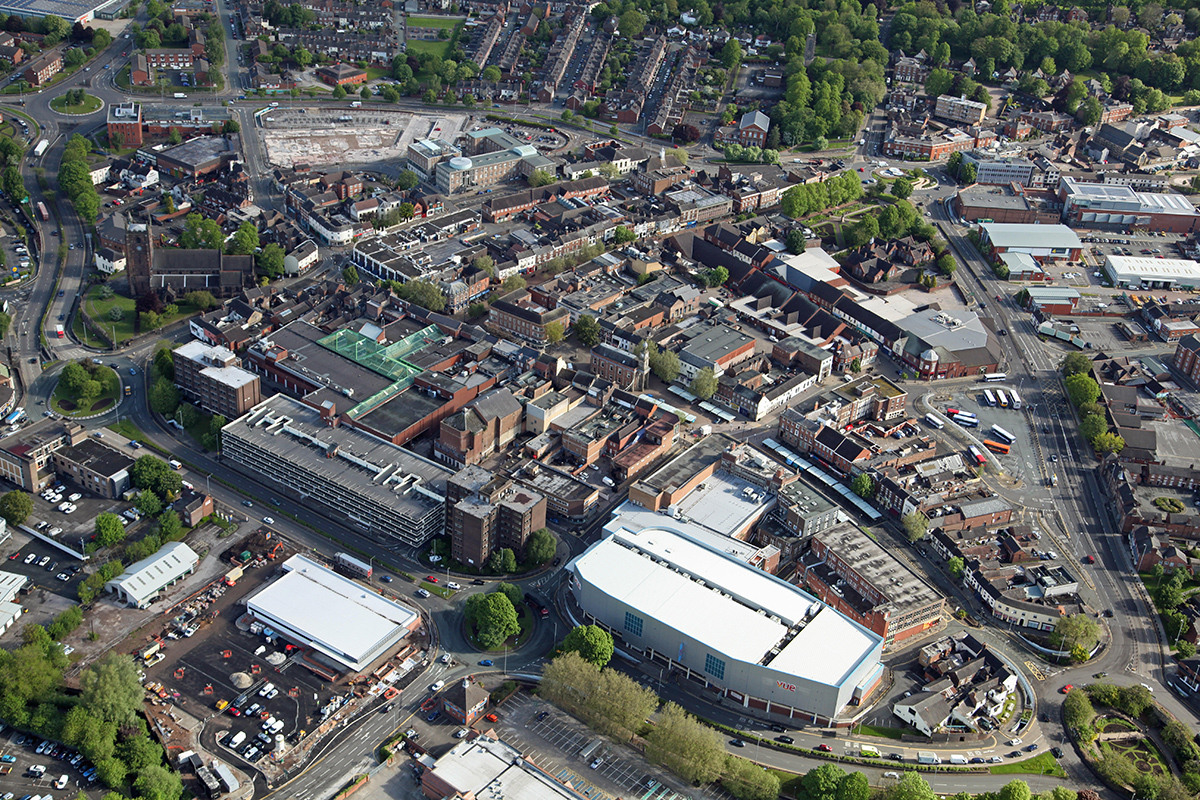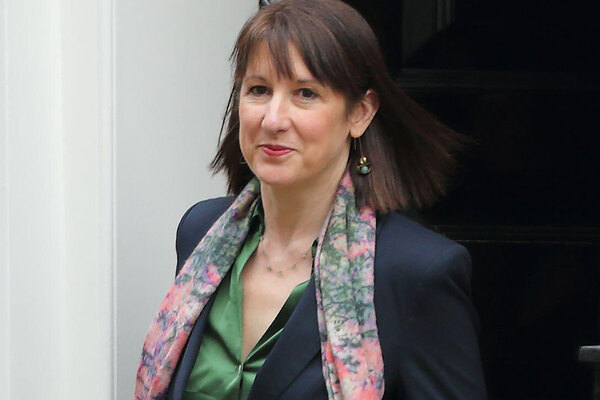You are viewing 1 of your 1 free articles
Landlords’ average operating margins increase for first time in five years, Housemark reveals
English housing associations’ average operating margins have increased for the first time in five years, according to a new value for money report from Housemark.
At its Housing Data and Analytics Summit 2024 in Nottingham, the data firm revealed, in an early analysis of the sector’s global accounts, that average overall operating margins went from 18.5% in 2022-23 to 19.3% in 2023-24. However, it is still significantly lower than 2018-19, when the average was 26.8%.
The research revealed that cost per home increased by 11% – with the median costs now over £5,000 per property – and an additional £500m was spent on capitalised repairs and maintenance over the 12-month period, a rise of 19%.
The top 10 per-home costs all belong to landlords based in London or those with significant supported housing stock.
Presenting the findings, John Wickenden, research manager at Housemark, said the increase in average overall operating margins was down to two years of rent increases of more than 7%, a strong focus in the sector on controlling spending, and increased capitalisation.
He said: “Perhaps one of the most significant factors has been this increase in capitalisation.”
Mr Wickenden said there was a move by the sector to increase capitalisation activities around voids, repairs and gas servicing.
The research found that sector earnings before financial deductions (earnings before interest, tax, depreciation and amortisation, EBITDA) “continue to create risk”, despite increased surpluses.
“While the median point is 123%, around one-third of [providers] reported a figure below 100%, meaning that earnings did not cover interest payments in the year,” the report on the findings said.
In terms of building new homes, the report said: “Despite a keen focus on existing stock and current tenants, development has continued to be a significant part of [private registered provider (PRP)] business plans.
“In 2023-24, £14.4bn was invested in the acquisition and development of housing properties, with 92% of English PRPs recording new supply – around 43,000 new social homes.”
The research found that reinvestment – both in terms of development and investment into existing homes – is at an all-time high. It went from 7.1% in 2022-23 to 8.2%, the highest since it was introduced as a metric in 2018.
The total value of sector debt increased by 7%, to £99.2bn, in 2023-24, with 65% of providers reporting an increase since March 2023.
A large proportion of the increase in debt is related to a small number of providers – including for-profits – whose debts increased by an average of £200m each, Housemark found.
Also presenting the research, Jonathan Cox, chief data officer at Housemark, spoke about what was behind the sector’s profile.
He said the increase in maintenance spending was the biggest driver. The firm found that in-house repairs services were “less exposed” to cost increases.
“So the cost increases in maintenance have been higher where the maintenance has been outsourced,” Mr Cox said.
He said the group that experienced the biggest increase in average cost per employee in terms of expenditure on staff, was building safety specialists – a 39% increase.
Mr Cox said a lot of landlords had increased their responsive repairs volumes.
“Landlords are really working hard to clear that backlog of responsive repairs and that has also been a driver,” Mr Cox said. “This is a really challenging financial profile for the sector and the customer feedback isn’t great either for the typical landlord.
“The only way landlords are going to be able to work within this squeeze capacity framework and improve customer experience is through data.
“That is why it is so critical that landlords really accelerate their data journey. It will help with leading service design. It will help with tailoring services to residents. It will help with predicting maintenance demand so that you can spend less and deliver more.”
Housemark has forecast a drop in overall satisfaction for the sector next year – down from 69.4% to 68.5%.
Mr Wickenden said: “Other research we’ve done [points] towards it taking around 18 months to turn a service improvement into a better perception rate. So we’re still not out of the woods on satisfaction.”
The firm forecasts that year-end sector arrears will dip below 3% for the first time since 2020, and that cost per unit will increase by around 4% to 5%.
Sign up for our development and finance newsletter
Already have an account? Click here to manage your newsletters











